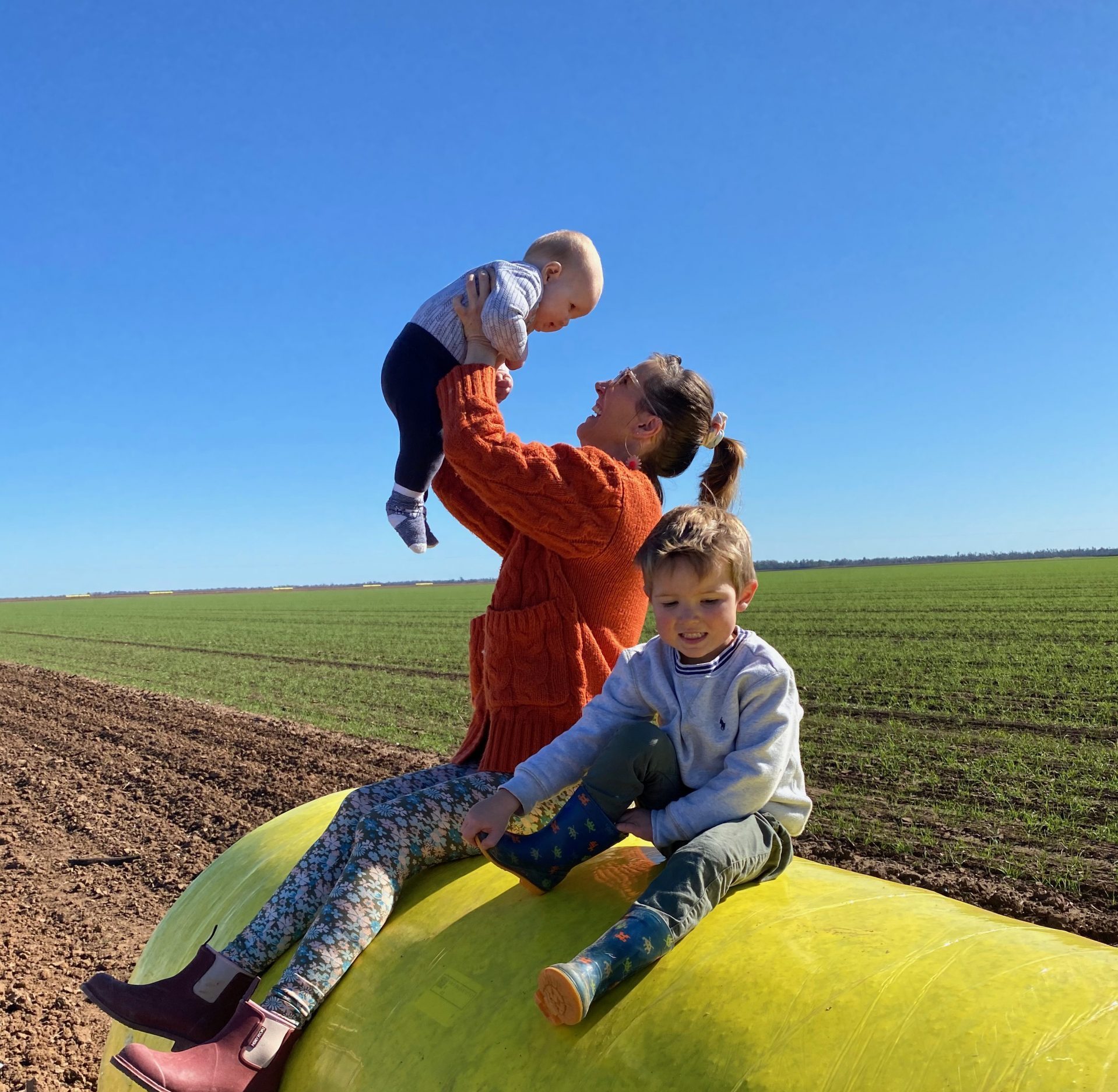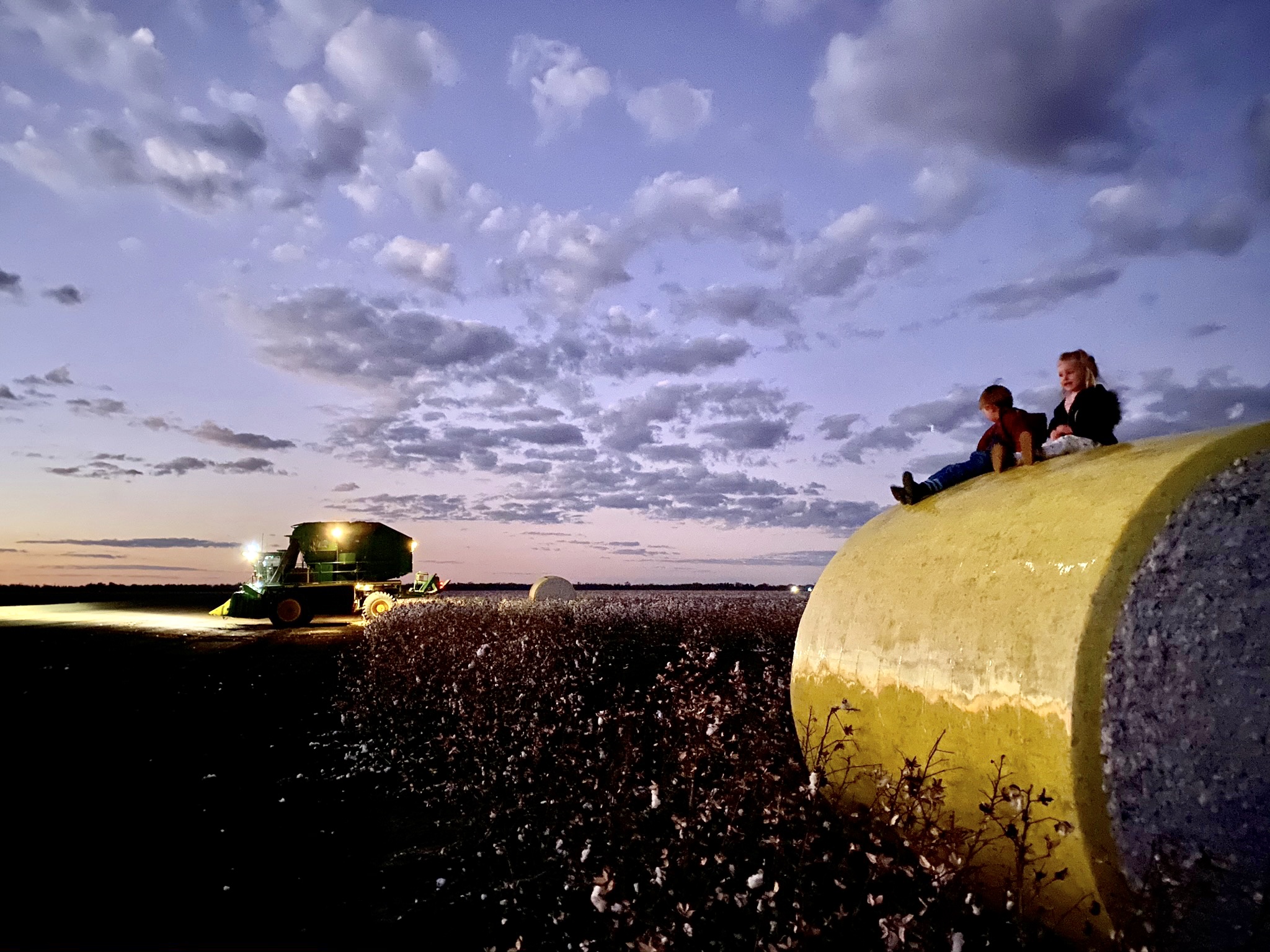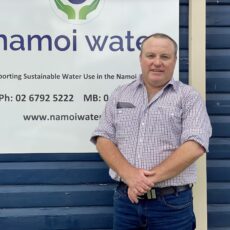Cotton yields might be down this year but the joy of bouncing on big, yellow cotton bales lives on as these photos of the Swansbra family show.
“There’s not too many stories of high yields this year,” said Ben Swansbra.
“The rain in January and February caused a lot of boll rot.”
The welcome wet and cloudy weather at the start of the year has delayed the picking season across the district with a handful of farmers still waiting to pick their cotton crops.
Cotton likes good, sunny, dry conditions to complete the boll opening process and that’s when we see the crop in all its white, fluffy glory.
“I’ve been (farming) here since 2005 and it’s the latest we’ve picked,” said Mr Swansbra who farms with his family at ‘Lochelgin’ just outside Wee Waa. They picked in late May.
“Of course, we’d been wishing for rain, and could see the benefit of the rain in providing a winter crop but hoped that benefit would outweigh the damage to the cotton.”
There is a lot of skill, muscle and innovation that goes into farming but when it comes to the weather – there’s no doubt luck is a factor.
Mr Swansbra said the dry conditions, dust storms, lack of water and unreliability of groundwater last year forced his team to make the decision, on December 31, to remove every second row of cotton in a couple of fields that had been planted because there just wasn’t enough water to support the crop.
“We removed cotton in a couple of fields back to a double skip row
configuration where there are two rows side-by-side left in and two rows side-by-side taken out, right the way across the field, effectively reducing the area by half.”
About 15 days later in mid-January the skies opened and it finally rained, unfortunately the crops had already been removed.
“Last summer had just been dry as a bone so we ripped them out,” Mr Swansbra added.
Mr Swansbra said in the end, he was positively “surprised” by the 2020 cotton picking season.
“It’s not a high yielding year.
“The remaining fields left as solid row cotton produced on average 12.2 bales per hectare.
“It was off a reduced acreage and lack of water.”
Despite cotton yields being down, Mr Swansbra said he was feeling
‘upbeat’ about agriculture following the rain.
“I’m feeling pretty optimistic, it’s great for the town and you can feel the change – people are smiling and it’s nice to see greenery.”
Cotton Australian has reported that the nation’s cotton crop is the smallest in decades.
“This year we’ll pick something less than 600,000 bales, which will be the smallest crop we’ve had in about 40 years,” Cotton Australia general manager Michael Murray told the ABC.
But the group remains optimistic about innovation and the future of the industry, with the Australian cotton industry’s second, five-year Sustainability Report released recently revealing that producing a bale of cotton now takes 48 per cent less water, 34 per cent less land, and 97 per cent fewer insecticides than in 1992.
To order photos from this page click here







